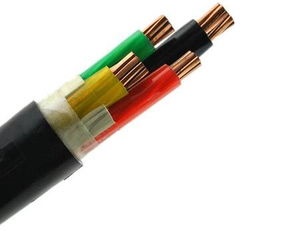YZ cable is a kind of rubber-sheathed cable, which is suitable for fixed laying in indoor and outdoor power lines. It has good weather resistance and fire resistance, and can be used in harsh environment for a long time. The conductor of YZ cable adopts bare copper conductor, which has low resistance and good conductivity. However, the electrical performance of YZ cable is relatively low and its application range is narrow, which is mainly suitable for low voltage and low current occasions.
YJV cable is a kind of XLPE insulated PVC sheathed cable, which is widely used in power system and construction engineering. YJV cable has good electrical performance, can withstand higher voltage and current, and is suitable for medium and low voltage power transmission and power supply requirements. Its conductor is copper conductor, which has low resistance and excellent conductivity. In addition, the insulating layer and sheath materials of YJV cable are crosslinked polyethylene and polyvinyl chloride, which have good heat resistance and corrosion resistance.

VV cable is a kind of PVC insulated PVC sheathed cable, which is often used in fixed wiring systems in buildings, industrial and mining enterprises and other places. VV cable has good electrical and mechanical properties, and is suitable for medium and low voltage power transmission and power supply. Its conductor is copper conductor, which has low resistance and good conductivity. The insulating layer and sheath of VV cable are made of PVC, which has good heat resistance and corrosion resistance.
From their characteristics and applications, we can see that YZ cable, YJV cable and VV cable have their own advantages and disadvantages. If the indoor and outdoor power lines are fixed and the voltage and current are low, YZ cable can be selected, which has good weather resistance and fire resistance. YJV cable is a good choice for medium and low voltage power transmission and power supply, which has good electrical performance and heat resistance. VV cable is a common cable type, which is suitable for medium and low voltage power transmission and power supply, and has good electrical and mechanical properties.
Finally, various factors, such as voltage, current, use environment, heat resistance and corrosion resistance, should be considered comprehensively according to the actual needs and use scenarios. At the same time, it is also necessary to ensure that the selected cable meets the relevant national standards to ensure its quality and safety.